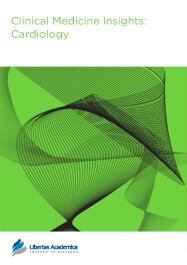

Publication Date: 06 Dec 2011
Type: Original Research
Journal: Clinical Medicine Insights: Cardiology
Citation: Clinical Medicine Insights: Cardiology 2012:6 1-6
doi: 10.4137/CMC.S7861

Background: Coronary sinus rupture (CSR) is a rare preventable complication of cannula insertion for retrograde cardioplegia. In the hands of an inexperienced surgeon, this complication has the risk of potential mortality and morbidity, and its repair is technically challenging. Techniques for repairing CSR have been reported previously. In this study, we determined predictors of CSR following coronary artery bypass graft (CABG) surgery.
Methods: Over a four-year period, we retrospectively analyzed 1500 patients in whom a retrograde coronary sinus catheter was used to administer cardioplegic solution. CSR occurred in 15 patients. (12 women and 3 men). Variables such as age, weight, body mass index, gender, aortic clamp time, pump time, cardiomegaly, ejection fraction, and number of grafts were determined for each patient. Factors correlated with CSR were analyzed using multiple regression analysis, and odd ratios of significant variables were determined.
Results: In multiple regression analysis, factors such as female gender, age, weight, and body mass index showed a significant correlation with CSR, and their odd ratios were 4.2, 1.0, 0.96, and 2.2, respectively.
Conclusion: In all 15 cases, a retrograde cannula with a self-inflatable balloon was used and 12 patients were woman with low body mass index. Forceful insertion due to coronary sinus web, fragility of arteries in thin patients, or a small coronary sinus caused CSR in the hands of an inexperienced surgeon.
PDF (553.65 KB PDF FORMAT)
RIS citation (ENDNOTE, REFERENCE MANAGER, PROCITE, REFWORKS)
BibTex citation (BIBDESK, LATEX)
XML
PMC HTML

Clinical Medicine Insights: Cardiology is very much conscious of time. Every step is done thoroughly and rapidly. The reviewers' comments are constructive. There is regular contact with the authors, providing explanations where necessary. The visibility also enjoyed by one's article once it is published is worthy of note. Thanks for making publishing with you so easy and enjoyable.

All authors are surveyed after their articles are published. Authors are asked to rate their experience in a variety of areas, and their responses help us to monitor our performance. Presented here are their responses in some key areas. No 'poor' or 'very poor' responses were received; these are represented in the 'other' category.See Our Results
Copyright © 2013 Libertas Academica Ltd (except open access articles and accompanying metadata and supplementary files.)
Facebook Google+ Twitter
Pinterest Tumblr YouTube